For a template to improve their domestic tank industry. The resulting Type 69 which I saw a lot of in the Persian Gulf War because the Chinese sold a boatload of them to Saddam Hussain so he could replace what has been destroyed in the resulting fight with the Iranians during the the Iran–Iraq War which also contributed to Iraq's defeat in the Persian Gulf War. Iraq's military was accustomed to fighting the slow moving Iranian infantry formations with artillery and static defenses, while using mostly unsophisticated tanks to gun down and shell the infantry and overwhelm the smaller Iranian tank force; in addition to being dependent on weapons of mass destruction to help secure victories. Therefore, they were rapidly overwhelmed by the high-tech, quick-maneuvering US forces using modern doctrines such as AirLand Battle, that we had developed to counter and disrupt the Soviet armored formations.
In 1900, Russia signed the Convention of Peking which gave them Outer Manchuria and other Chinese lands. When both countries became communist, their nagging border dispute was swept under the rug, especially since China needed Russian technological expertise.
At least till Nikita Kruschev ruined it. In February 1956, he hosted the 20th Congress of the Communist Party and denounced Joseph Stalin as a monster, demanding reforms.
Mao Zedong, China’s head honcho, was shocked. He thought of Stalin as a comrade-in-arms. Worse, he believed that Kruschev was also attacking him, for Mao felt that purges and summary executions were necessary for China’s transition from its feudalist past.
Then in 1958, Kruschev wanted to install long wave radio stations along China’s coast to help guide Soviet submarines.
Mao was suspicious but agreed on the condition that China be given nuclear weapons. Kruschev balked, even though Chinese scientists had already received blueprints for an atomic bomb from their Russian counterparts.
When Kruschev visited the US in 1959, Mao accused him of sucking up to capitalists. Things came to a head in 1962 when China used the Cuban Missile Crisis as an opportunity to occupy India’s Aksai-Chin region, and the USSR sided with India. But when Kruschev pulled Soviet missiles out of Cuba, Mao had had enough, and the official friendship between the two nations ended.
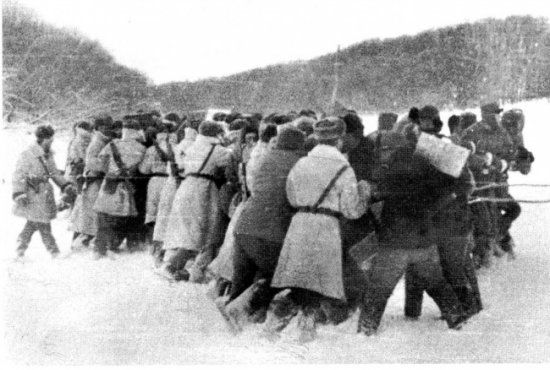
In 1964, Mao claimed that the Treaty of Beijing had been unfair. He demanded a return of territories under Soviet control, including Zhenbao (Treasure) Island, which the Russians called Damanski.
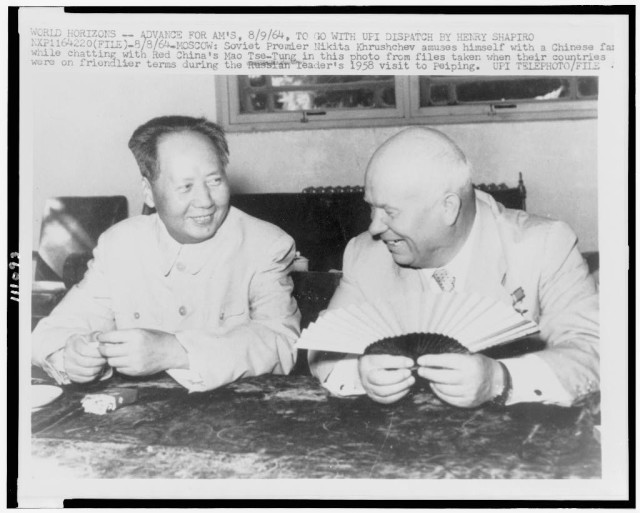
Chinese and Soviet troops began massing on the disputed border. Though technologically inferior to Russia, Mao was convinced that China’s superior numbers would far outweigh Russian technology. He was right.
When Arkady Nikolayevich Shevchenko (former Under Secretary General of the UN) defected to the US in 1978, he admitted that the USSR was terrified of China’s numbers. Shevchenko claimed that if Mao attacked, the Kremlin was going to launch nuclear missiles.
But Nikolai Vasilyevich Ogarkov, Marshal of the Soviet Union, cautioned against it. He knew they couldn’t nuke China without consequences to themselves. But while the Soviets thought of self-preservation, Mao did not.
Mao just couldn’t grasp how dangerous nuclear weapons really were, calling them “America’s Paper Tigers.” He was convinced that China’s vast size and numbers protected it from any possibility of nuclear annihilation. Still, he took no chances, so on October 16, 1964, China detonated its first atomic bomb in their test area.
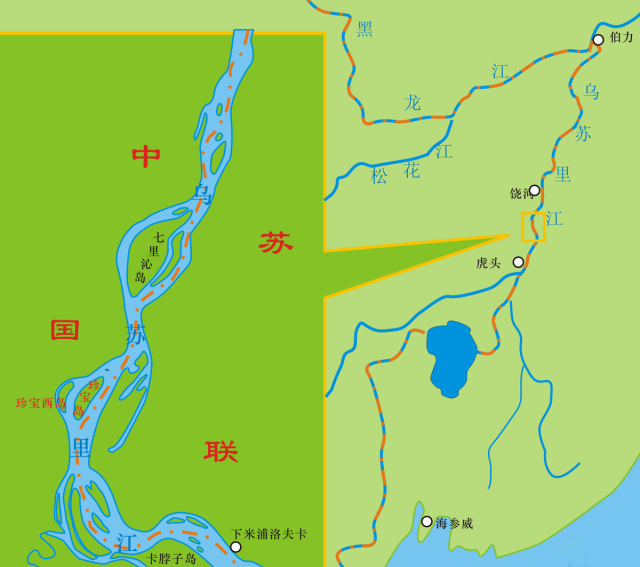
The Soviets claim that Chinese soldiers began haranguing Soviet border posts, some by waving Mao’s “Red Book” at their faces. To de-escalate tensions, Soviet border guards were ordered to use sticks to push Chinese nationals back across the border.
The Chinese retaliated by using longer sticks, resulting in ridiculous jousts. Later, they sent martial artists and wrestlers to the border, since neither side wanted outright war nor to lose face.
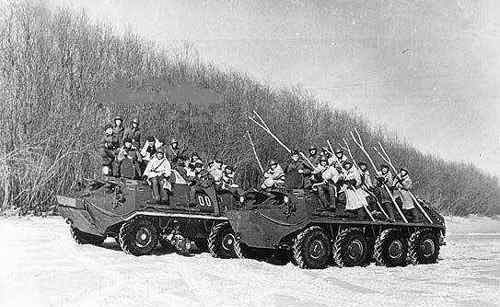
To take Zhenbao back, they sent in four of their newest weapons – the still-secret T-62. As they crossed the narrow frozen river, one ran over a landmine. The other three didn’t bother turning. They simply reversed back to the Soviet side.
A PLA soldier approached the damaged tank, opened the hatch, and found himself staring at the barrel of a pistol held by an injured Russian. The man fired, but his gun jammed, allowing the Chinese soldier to throw a grenade in. The Chinese wanted to tow the tank away, but sniper fire from the Soviet side prevented that.
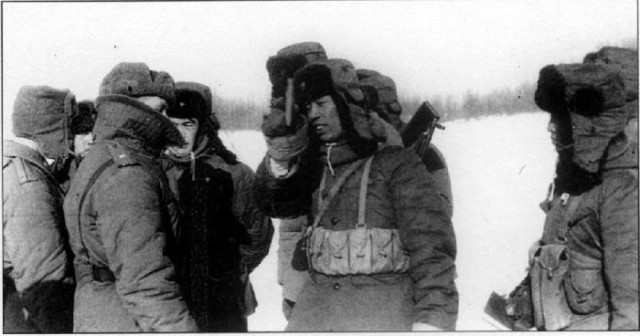
With the Soviets gone, the Chinese navy was called in to help pull the tank onto the Chinese side. They arrived on March 28th, but were shelled, so the Chinese tried another tactic.
Using the tank and sniper fire as cover, engineers began dismantling the T-62. They were still at it on April 2nd when the ice began to melt. The Soviets took advantage of this by firing at the ice around the tank till it sank. Satisfied, they retreated.
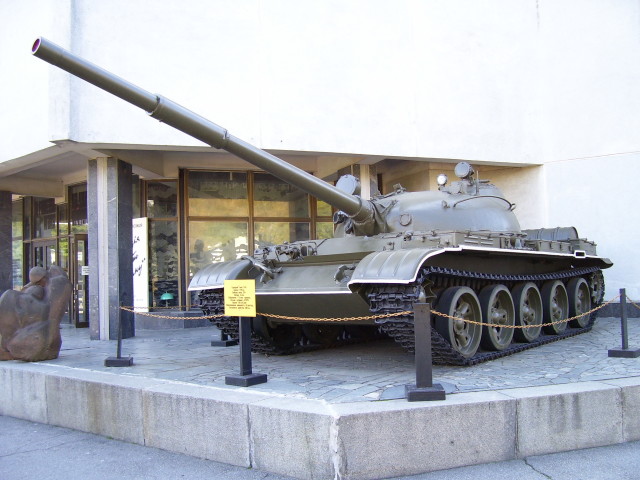
But the Soviets hadn’t given up on their tank. In mid-May, a Chinese saboteur was caught near the factory with a bag full of explosives. Under questioning, he admitted to working for the Soviets who wanted him to destroy the factory and the T-62. He was executed, of course.
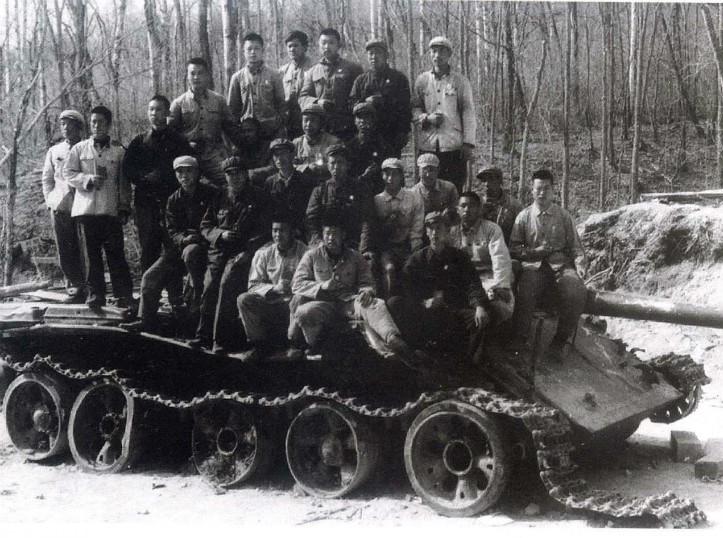
Only in 1991 was Zhenbao Island returned to China, but it was only in 2003 that the two nations finally delineated their borders




Very interesting, as Artie Johnson used to say.
ReplyDelete